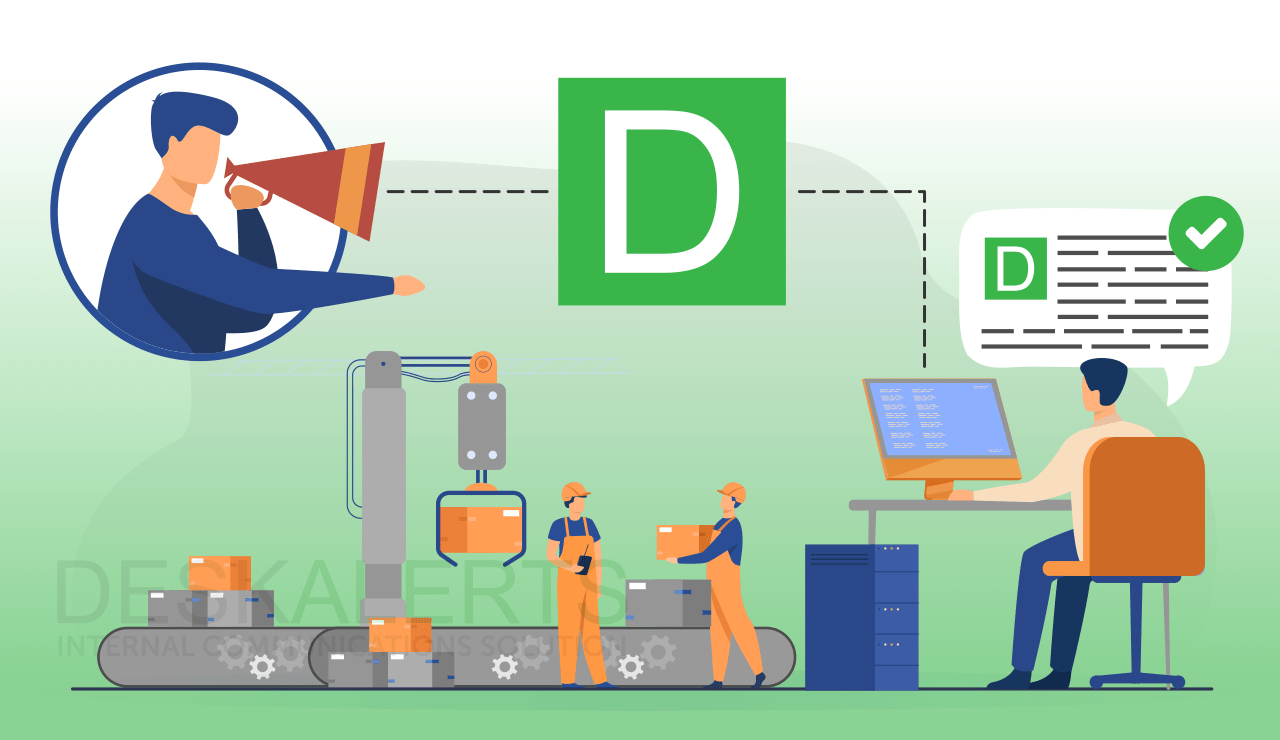
In the intricate and rigorously governed landscape of manufacturing, the pursuit of compliance stands as a fundamental pillar for achieving and sustaining success.
This article embarks on a thorough examination of Compliance in Manufacturing, delving into its profound significance, intricacies, and the strategic measures that companies can implement to align with regulatory standards.
As manufacturing processes evolve in complexity, embracing and conforming to compliance requirements transcends mere legal obligations; it becomes a driving force for operational efficiency, reputation management, and enduring competitiveness. This exploration dissects the critical facets of compliance, shedding light on its importance, the advantages it offers, and the actionable steps that pave the way for manufacturing excellence.
Table of contents
What is Compliance for Manufacturing Companies?
Why is Compliance Essential for Manufacturing Companies?
12 Main Areas of Manufacturing Compliance
Top Regulations and Standards in Manufacturing
8 Steps to Achieve Compliance
What is Compliance for Manufacturing Companies?
Compliance for manufacturing companies refers to the adherence and conformance to the various regulations, standards, and requirements set forth by governing bodies, industry associations, and relevant authorities. It encompasses the necessary measures, practices, and procedures that companies must implement to ensure their manufacturing processes align with legal obligations, quality standards, and industry norms. Achieving compliance is crucial for maintaining operational integrity, meeting regulatory mandates, and sustaining competitiveness in the dynamic manufacturing landscape.
Why is Compliance Essential for Manufacturing Companies?
Compliance is essential for manufacturing companies because it ensures they operate within legal boundaries, adhere to industry standards, and meet regulatory requirements. The significance lies in:
Compliance helps companies avoid legal repercussions by aligning their operations with local, national, and international laws.
Following compliance standards ensures the production of high-quality goods that meet or exceed industry benchmarks.
Meeting regulatory standards builds trust with consumers, indicating that the company prioritizes safety, quality, and ethical practices.
Compliance frameworks often include best practices that enhance efficiency, reduce risks, and optimize manufacturing processes.
Many markets demand compliance with specific standards for entry. Achieving and maintaining compliance opens up opportunities for global market access.
Adhering to compliance standards safeguards a company's reputation, showcasing commitment to ethical business practices and responsible manufacturing.
Compliance frameworks help identify and address potential risks, ensuring proactive measures are in place to prevent issues.
Overall, compliance is not just a regulatory necessity, but a strategic imperative that contributes to sustained operational excellence and long-term success in the manufacturing industry.
12 Main Areas of Manufacturing Compliance
Navigate the vast landscape of manufacturing compliance by identifying the twelve main areas that demand attention. This comprehensive overview provides insights into the specific aspects companies must address to achieve a holistic compliance framework.
1. Quality Control and Assurance
Quality control is the cornerstone of manufacturing compliance. This area encompasses the processes and standards implemented to ensure that products meet or exceed customer expectations. From raw material inspection to final product testing, maintaining stringent quality controls is essential for delivering reliable and safe products.
2. Environmental Regulations
Manufacturing processes often have environmental implications. Compliance in this area involves adhering to regulations that minimize the environmental impact of production activities. This includes waste management, emissions control, and sustainable practices to mitigate the ecological footprint of manufacturing operations.
3. Safety Standards
Ensuring a safe working environment is paramount in manufacturing compliance. This area covers occupational health and safety regulations to prevent accidents, protect employees, and maintain a secure workplace. Implementing safety protocols and providing proper training are crucial components of compliance in this domain.
4. Ethical Practices
Ethical considerations extend beyond legal obligations. Manufacturing companies must adhere to ethical practices, promoting fair labor practices, avoiding exploitation, and maintaining transparency in business dealings. This area of compliance contributes to building trust with stakeholders and fostering a positive industry reputation.
5. Supply Chain Management
Compliance in supply chain management involves ensuring that the sourcing and procurement processes align with legal and ethical standards. This includes verifying the practices of suppliers, addressing issues like child labor and fair trade, and maintaining transparency throughout the supply chain.
6. Data Security and Privacy
As manufacturing processes become increasingly digitized, protecting sensitive data is crucial. Compliance in data security and privacy involves implementing robust cybersecurity measures to safeguard intellectual property, customer information, and confidential business data.
7. Labor Laws and Employment Practices
Adhering to labor laws and ethical employment practices is vital for manufacturing compliance. This includes fair wages, reasonable working hours, and adherence to regulations governing employment contracts. Complying with labor laws contributes to a positive work culture and legal standing.
8. Intellectual Property Rights
Protecting intellectual property is a key aspect of manufacturing compliance, especially in industries where innovation is paramount. This involves respecting patents, trademarks, and copyrights, both in product development and business operations.
9. Export Control
For manufacturing companies engaged in international trade, compliance with export control regulations is essential. This area ensures that products, technologies, and information are exported in accordance with government regulations to prevent unauthorized distribution.
10. Product Safety and Liability
Ensuring the safety of manufactured products is a critical aspect of compliance. This involves meeting product safety standards, providing clear instructions and warnings, and addressing any potential liabilities associated with product use.
11. Financial Compliance
Maintaining financial compliance involves adhering to accounting standards, tax regulations, and financial reporting requirements. This area ensures transparency and accuracy in financial operations, contributing to the company's overall integrity.
12. Continuous Improvement Processes
Compliance is not static; it requires continuous improvement. This area focuses on implementing processes and systems that monitor, evaluate, and enhance compliance efforts over time. Embracing a culture of continuous improvement ensures that manufacturing companies stay ahead of evolving regulations and industry standards.
Top Regulations and Standards in Manufacturing
In the realm of manufacturing, there are numerous rules and standards aimed at ensuring safety, quality, and operational efficiency. Some of the key rules and standards in manufacturing include:
Quality Management. An international standard setting requirements for quality management systems.
Environmental Management Systems. A standard defining requirements for environmental management systems.
- OSHA (Occupational Safety and Health Administration)
U.S. standards for occupational safety and health, ensuring safe and healthy working conditions.
- Good Manufacturing Practice (GMP)
Standards regulating the production and quality control of products in the pharmaceutical and food industries.
Methodology aimed at improving production efficiency by minimizing losses and unnecessary processes.
Methodology for improving product and process quality by minimizing defects.
- HACCP (Hazard Analysis and Critical Control Points)
Food safety management system designed to identify and control potential hazards.
- NFPA (National Fire Protection Association)
Standards for fire prevention and explosion safety.
Marking indicating compliance of products with European safety standards.
Quality Management System in the Aerospace Industry. Developed based on ISO 9001 but with additional requirements for the aviation, space, and defense industries.
These rules and standards represent only a small list, and many industries and countries may have their unique requirements. It is crucial for companies in the manufacturing sector to regularly update their knowledge of applicable standards and monitor legislative changes to ensure full and reliable compliance.
8 Steps to Achieve Compliance
1. Conduct a Comprehensive Compliance Risk Assessment
Initiate your compliance journey by conducting a thorough risk assessment. Identify potential areas of non-compliance by analyzing industry regulations, internal policies, and external standards. This step lays the foundation for understanding the specific compliance landscape your manufacturing company operates within.
2. Establish Clear Compliance Objectives and Policies
Define clear and measurable compliance objectives aligned with your company's values and industry standards. Develop robust compliance policies that provide a framework for employees to follow. These policies should be communicated effectively throughout the organization, fostering a culture of awareness and accountability.
3. Implement Robust Documentation Practices
Documentation is a key element of compliance. Establish and maintain detailed records of processes, procedures, and compliance activities. Proper documentation not only ensures transparency but also serves as a valuable resource during audits or assessments.
4. Implement Regular Compliance Training
Empower your workforce with the knowledge and skills required for compliance. Regular training sessions should cover relevant regulations, internal policies, and any updates to compliance requirements. Ensuring that employees are well-informed contributes to a proactive culture of compliance within the organization.
5. Monitor and Audit Compliance Practices
Implement a systematic monitoring and auditing system to assess ongoing compliance. Regularly review processes, documentation, and adherence to policies. This step enables the identification of potential issues before they escalate, ensuring continuous compliance improvement.
6. Establish a Reporting and Communication System
Facilitate clear channels for reporting potential compliance issues. Encourage open communication within the organization to address concerns promptly. Establish a reporting system that allows employees to raise compliance-related issues without fear of reprisal.

7. Respond Promptly to Non-Compliance Issues
Inevitably, non-compliance issues may arise. Develop a responsive protocol to address and rectify these issues promptly. Investigate the root causes, implement corrective actions, and communicate transparently with relevant stakeholders.
8. Continuously Improve Compliance Processes
Embrace a culture of continuous improvement by regularly evaluating and enhancing compliance processes. Stay informed about industry developments, regulatory changes, and best practices. Adjust your compliance framework accordingly, ensuring that your manufacturing company remains agile and adaptive in the face of evolving compliance requirements.
***
FAQ
What are the steps in compliance?
Assessment and Identification:
Identify relevant regulations and standards applicable to the industry and company operations.
Understanding Requirements:
Gain a clear understanding of compliance requirements, ensuring awareness of specific rules and regulations.
Policy Development:
Develop internal policies and procedures aligning with compliance standards to guide employees and operations.
Communication and Training:
Communicate compliance policies across the organization and provide training to ensure employees understand their roles in maintaining compliance.
Implementation:
Implement processes and systems that support compliance, integrating necessary changes into daily operations.
Monitoring and Auditing:
Regularly monitor operations for compliance adherence, conduct internal audits, and address any non-compliance issues promptly.
Documentation:
Maintain thorough documentation of compliance efforts, including policies, training records, and audit reports.
Continuous Improvement:
Establish mechanisms for continuous improvement, regularly reviewing and updating compliance measures to align with evolving regulations.
These steps collectively form a comprehensive approach to achieving and maintaining compliance within an organization.
What is compliance in manufacturing?
Compliance in manufacturing refers to the adherence of manufacturing companies to established regulations, standards, and legal requirements governing their industry. It encompasses the practices and processes implemented by manufacturers to ensure that their operations, products, and overall business activities align with applicable laws and industry standards. The goal of compliance in manufacturing is not only to meet legal obligations but also to uphold high standards of quality, safety, and ethical conduct. It involves thorough understanding, implementation, and continuous monitoring of rules and guidelines to maintain operational integrity and ensure the well-being of stakeholders.
How to achieve compliance?
Understand Applicable Regulations
Gain a comprehensive understanding of the relevant regulations and standards that apply to your industry and specific manufacturing processes.
Conduct Compliance Audits
Regularly conduct internal audits to assess current practices against regulatory requirements. Identify areas of non-compliance and opportunities for improvement.
Implement Robust Documentation
Develop and maintain detailed documentation of processes, procedures, and quality control measures. Ensure that documentation aligns with regulatory expectations.
Employee Training and Awareness
Provide thorough training to employees on compliance requirements and the importance of adhering to established standards. Foster a culture of awareness and responsibility.
Establish Compliance Protocols
Create clear protocols and workflows that align with regulatory standards. Ensure that all employees are aware of and follow these protocols in their day-to-day activities.
Regularly Update Policies
Stay informed about changes in regulations and update internal policies accordingly. Regularly review and revise compliance policies to reflect the most current standards.
Invest in Technology
Leverage technology and software solutions to automate and streamline compliance processes. This can enhance accuracy, efficiency, and transparency in compliance management.
Engage External Experts
Seek guidance from legal experts or consultants with expertise in manufacturing compliance. External perspectives can provide valuable insights and ensure a thorough understanding of requirements.
Continuous Monitoring and Improvement
Implement systems for continuous monitoring of compliance metrics. Use feedback and data to identify areas for improvement and proactively address potential issues.
Establish a Compliance Culture
Foster a culture of compliance throughout the organization, emphasizing the importance of adherence to regulations in every aspect of the manufacturing process.
By systematically addressing these steps, manufacturing companies can enhance their compliance efforts, mitigate risks, and maintain a commitment to high standards in their operations.
 Caroline Duncan
Caroline Duncan








